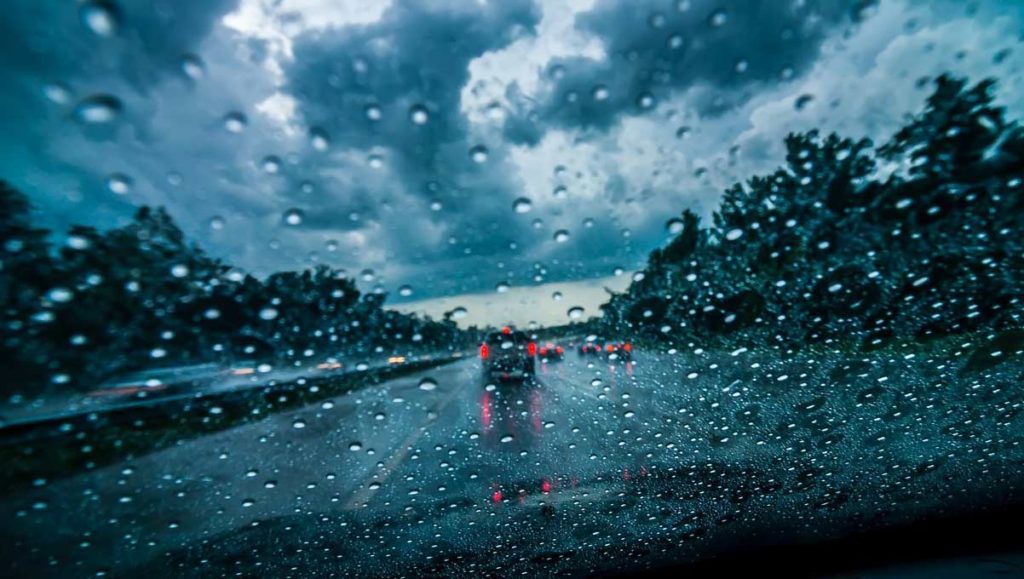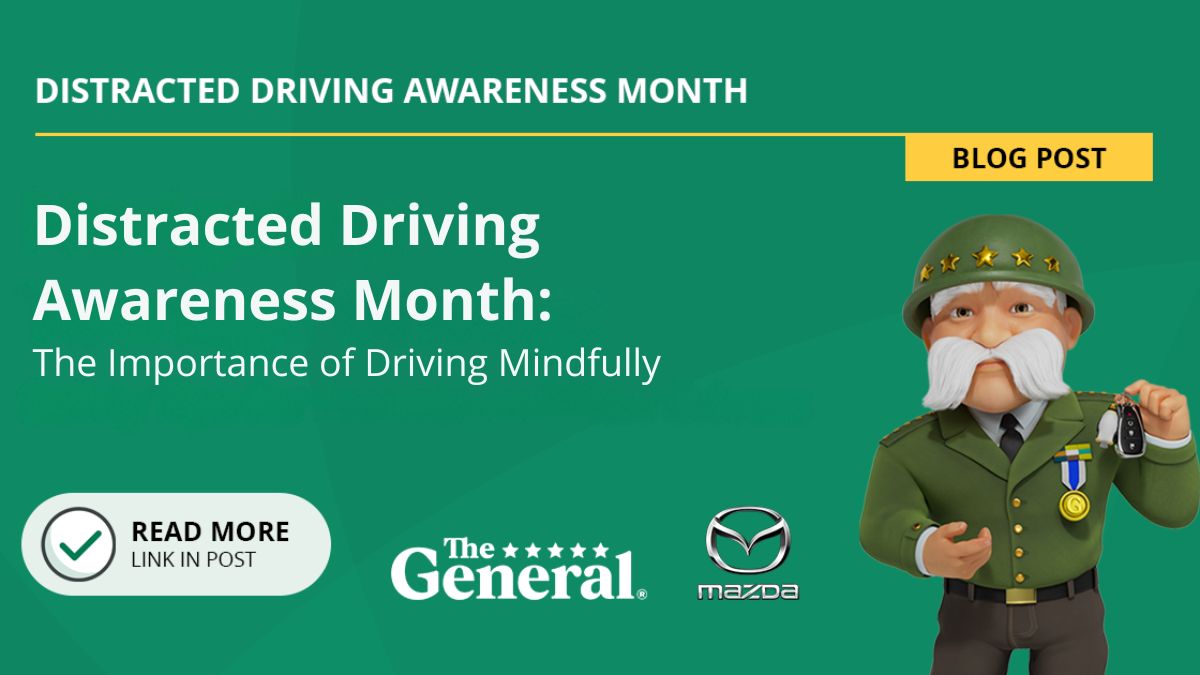Despite your best plans for the perfect drive, you can never predict the weather. Whether it’s a commute back from work or a road trip across the country, driving in the rain is an unavoidable part of life.
When the roads get wet, it can create problems for everybody. The continuous fall of water and spray from other cars decreases visibility, and motorists require extra time to brake due to slick conditions. Plus, if your vehicle isn’t ready for driving in the rain, you could end up in an accident with other people or someone’s property.
By understanding how to drive in the rain, you can help prevent collisions and keep your car insurance rates down by being a safe driver. Here are four safety tips for driving in the rain that you can apply the next time you need to navigate wet roads.
How to Drive in the Rain Safely
The first step towards being a safer driver involves knowing how to react to different traffic situations. When the highways and byways are coated with water, you should adjust your driving style to suit the state of the wet roads.
The first step towards driving safely in the rain is adjusting your speed. Just like driving in winter weather, the additional moisture on the road requires driving at lower speeds to maintain control of the vehicle. If you drive at (or above) posted highway speeds, you run the risk of hydroplaning, which could result in a major accident with trees, power poles, other property, or even another driver.
Going slower when driving in the rain has other advantages as well. Data from the U.S. Federal Highway Administration shows when driving in the rain, the distance it takes to recognize a hazard decreases from between 527 feet and 686 feet, down to between 178 and 221 feet. When you take it a little slower on the roads, you give yourself extra time to avoid unseen hazards or stopped traffic.
1. Maintain Your Tires to Help with Braking on Wet Roads
Following tips for driving in the rain is only one part of the safety equation when navigating wet roads. Alongside driving slower and allowing more stopping distance, it is critical to make sure your tires are well-maintained and at the proper manufacturer-recommended inflation.
When driving, your tire treads do much more than keep you connected to the road. The grooves on your tires wick away dirt and moisture, too. If your treads are running thin, it also affects how much harder your brakes need to work. As a result, you could lose control of your vehicle and get into an accident. Having well-maintained tires can help protect you if you need to drive in the rain.
Keeping your tires in good condition is not the only way they can help you drive safely in the rain. Having the proper inflation in those tires ensures they maintain their grip on the road, giving you an advantage with stopping power. If your tires are underinflated, you run the risk of putting too much stress on them, resulting in premature wear and blowouts. Should you have too much air in them, your tires would lose grip and traction from overinflation. Making sure your tires have the right amount of air can help you stay on the road and avoid an accident – all while helping you spend less on gas.
2. Keep Your Windshield Wipers Ready to Wipe Away Rain
Of course, safe driving habits and properly maintained tires can’t do much if you can’t see where you are going. As part of your plan for driving safely in the rain, make sure your windshield is clean and that your windshield wipers are in good condition.
Signs of worn windshield wipers include skipping or streaking when they turn on and making a grinding sound when wiping. If your windshield wipers are worn down, they cannot effectively whisk moisture and road spray away. Even if other drivers have their lights on when driving in the rain — a legal requirement in most states — obscured vision from non-functioning windshield wipers can hide traffic problems or other hazards on the road. Without the ability to see everything coming up ahead of you, there’s always the risk of missing a turn, hitting a road hazard, or even totaling your car.
If your vehicle has them, rear windshield wipers are equally important for driving in the rain. The inability to see approaching vehicles in your rearview mirrors can make you a hazard to others, which could lead to an accident.
Because your windshield wipers are a key part of your safety systems, it’s critical to check them regularly. A good idea to prevent driving with worn wiper blades is to check them at every oil change, as well as before the seasons change. If the blades are thin, cracked, or the frames are bent, it is time to have them changed.
3. Check Your Lights Before Driving in the Rain
Many stories have been started with the words “It was dark and stormy” for good reason. It adds a layer of intrigue and perfectly describes the unsafe conditions of driving in the rain. Without bright headlights and taillights, there’s a very good chance your car could end up invisible to other drivers.
Keeping your lights working — headlights, taillights, and turn signals — is one of the most important parts of safe driving. Regardless of the time of day, storm clouds and rain can obscure your vision, making it difficult to see everything around you. Lights allow you to see what’s ahead and make you visible to other drivers on the road.
Additionally, having your lights on when driving in the rain could be a legal requirement. In states like Minnesota, drivers are required to keep their lights on during the day in low-light conditions. This includes foggy conditions, as well as rain, snow, sleet, and hail. Without working headlights and taillights, you not only risk getting a ticket, but you could be found liable for causing an accident as well.
4. Avoid Distractions on Wet Roads
Although the rain outside is a serious hazard, another potential problem could be inside your car. One of the most important safety tips for driving in the rain is to put down cell phones and other devices while behind the wheel.
Today’s cars and trucks come with an incredible amount of technology, helping us do everything from loading our favorite playlists to guiding us to our next destination. However, using them while driving in the rain can have catastrophic results. Studies published in the American Journal of Health Education show the risk of getting in a car accident increased four times when drivers used their cell phones behind the wheel. Furthermore, the distractions of phones or other screens were even greater for those 50 and older. When combined with the additional stopping time needed on wet roads, looking down at a screen or taking that call could cause you to crash.
If circumstances require you to go driving in the rain, putting down your devices and turning off screens in the car could help you reduce your odds of getting in an accident. With wet roads, drivers need the ability to respond quickly to changing conditions. Anything that takes your eyes off the road creates a distraction and could change how much time you have to react to road or traffic conditions. Even if you consider yourself a highly skilled driver, the best thing you can do for yourself and everyone around you is to keep your eyes on the road — not your screens.
Let Your Smart Driving Save You Money with The General
Understanding how to drive in the rain goes beyond defensive driving and reacting to road conditions. By keeping your vehicle in top condition and giving yourself more time to get to your destination, you can reduce the chances of getting in an accident, helping you stay safe and protect your property.
Being a good driver can also help you save money on your car insurance as well. Get an insurance quote from The General® today and see how much your smart and defensive driving could reduce your monthly car insurance premium, putting more cash in your pocket for a rainy day.








